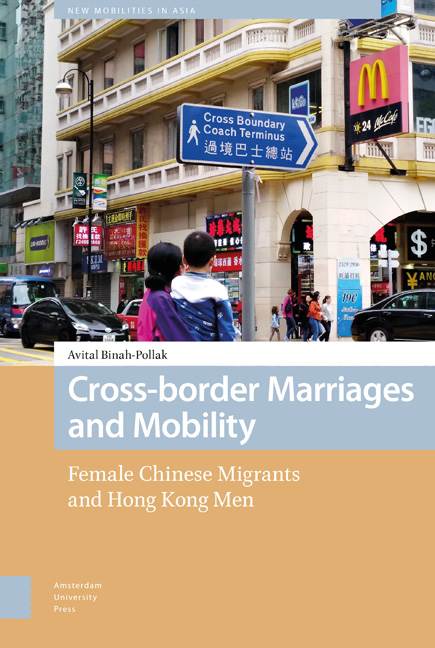Book contents
- Frontmatter
- Contents
- List of Figures and Tables
- Acknowledgments
- Introduction
- 1 The Hong Kong-China Border: A Space of Confinement and Movement
- 2 Motivations for Crossing Borders
- 3 ‘Same as Before, Living as a House Wife’
- 4 Hong Kong's Education: A Bridge to the ‘First World’
- 5 New Voices in Hong Kong: Local Identity Formation
- Concluding Thoughts: Home Is not where the Heart Is but where it Wants to Be
- Bibliography
- Index
Concluding Thoughts: Home Is not where the Heart Is but where it Wants to Be
Published online by Cambridge University Press: 21 November 2020
- Frontmatter
- Contents
- List of Figures and Tables
- Acknowledgments
- Introduction
- 1 The Hong Kong-China Border: A Space of Confinement and Movement
- 2 Motivations for Crossing Borders
- 3 ‘Same as Before, Living as a House Wife’
- 4 Hong Kong's Education: A Bridge to the ‘First World’
- 5 New Voices in Hong Kong: Local Identity Formation
- Concluding Thoughts: Home Is not where the Heart Is but where it Wants to Be
- Bibliography
- Index
Summary
When I look back at the past six years of fieldwork in Hong Kong, the word that comes to my mind is change. As an Israeli, I often listen to the news. Many radio stations in Israel broadcast the news every 30 minutes; since there is a constant feeling of urgency, I often feel that if I miss the news, I probably miss the report of an important event which just took place. After I returned to Israel from a long stay abroad, I remember turning on the radio in my car. The news was on, and I anticipated hearing some new report. But the tone of the narrator, the rhetoric, and the intonation all made me feel as if nothing had actually changed during all those months. On the other hand, each time I went back to Hong Kong, whether for a long or short visit, over the past six years, it seemed as if the winds of change were constantly blowing. Perhaps because I do not have an ‘outsider’ view I have become numb to any significant change in my own society. But this contrast was still very apparent to me.
Each time I went to Hong Kong, everyone around me was preoccupied with change, especially the changes Hong Kong has experienced since the handover. In migration research, movement from one place to another or from one social position to another is an important part of the analysis. However, studies that focus on the motivations and experiences of migrants often tend to look at either the flow or restriction of movement, overlooking situations where movement and confinement define each other (Glick Schiller and Salazar, 2013; Hackle et al., 2016). In this closing chapter, I would like to put the spotlight on change. By this, I do not mean simply describing the changes that took place in my field, but rather trying to treat change as an emic term, and as an immanent construct in the analysis. I believe doing this exposes the spaces and situations in which the interface between mobility and immobility takes place in contemporary Hong Kong.
Inclusion and Exclusion
Migration is a socially embedded process that reflects and reinforces a specific legal and social structure.
- Type
- Chapter
- Information
- Cross-border Marriages and MobilityFemale Chinese Migrants and Hong Kong Men, pp. 167 - 174Publisher: Amsterdam University PressPrint publication year: 2019

